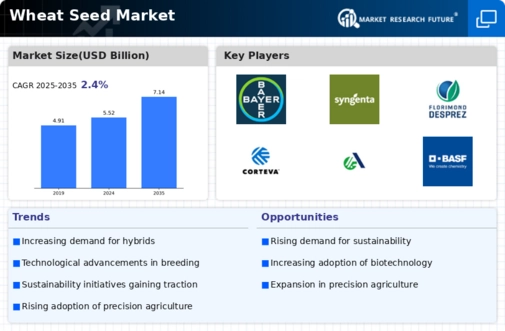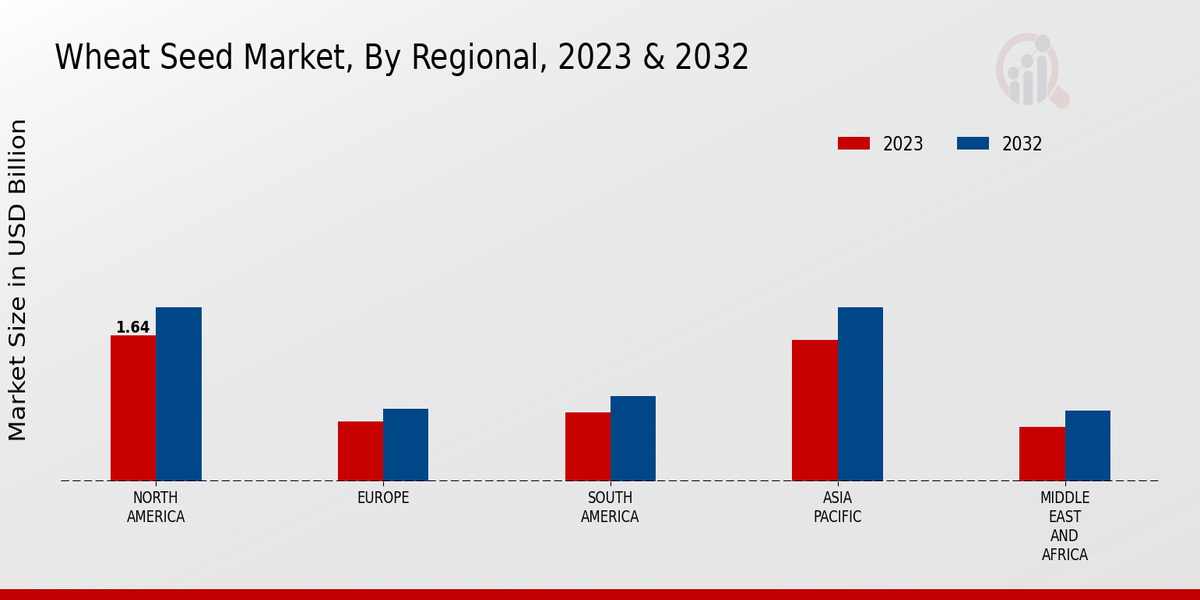Increasing Global Population
The Global Wheat Seed Market Industry is experiencing growth driven by the increasing global population, which is projected to reach approximately 9.7 billion by 2050. This surge in population necessitates a corresponding rise in food production, particularly staple crops like wheat. As wheat serves as a primary source of calories for billions, the demand for high-yield and resilient wheat seed varieties is likely to escalate. Consequently, the market is expected to expand, with estimates suggesting a market value of 5.52 USD Billion in 2024. This growth reflects the urgent need to enhance agricultural productivity to meet the nutritional requirements of a growing populace.
Rising Demand for Organic Wheat
The rising demand for organic wheat is emerging as a significant driver within the Global Wheat Seed Market Industry. Consumers are increasingly seeking organic products due to health and environmental concerns, prompting farmers to transition to organic farming practices. This shift necessitates the development of organic wheat seed varieties that meet certification standards. As a result, the market is likely to witness growth, with projections indicating a value of 7.14 USD Billion by 2035. The increasing consumer preference for organic wheat products may lead to a greater emphasis on sustainable farming practices and the cultivation of organic seed varieties.
Government Support and Subsidies
Government support and subsidies are pivotal in shaping the Global Wheat Seed Market Industry. Many countries are implementing policies to promote wheat production through financial incentives, research funding, and infrastructure development. For instance, initiatives aimed at improving irrigation systems and providing farmers with access to high-quality seeds are becoming more common. Such support not only encourages farmers to adopt better practices but also enhances overall productivity. The market is expected to reach a value of 5.52 USD Billion in 2024, reflecting the positive impact of these governmental measures on wheat seed adoption and agricultural output.
Climate Change and Adaptation Strategies
Climate change poses challenges to wheat production, necessitating the development of adaptive strategies within the Global Wheat Seed Market Industry. As changing weather patterns impact crop yields, there is a growing emphasis on breeding wheat varieties that can withstand extreme conditions such as drought and flooding. This focus on resilience is likely to drive innovation in seed development. The market is projected to grow at a CAGR of 2.37% from 2025 to 2035, reflecting the industry's response to climate-related challenges. By investing in climate-resilient wheat seeds, stakeholders aim to ensure food security in the face of environmental uncertainties.
Technological Advancements in Agriculture
Technological advancements in agriculture are significantly influencing the Global Wheat Seed Market Industry. Innovations such as precision farming, biotechnology, and genetic engineering are enhancing seed quality and crop yields. For instance, genetically modified wheat varieties that are resistant to pests and diseases are becoming increasingly prevalent. These advancements not only improve productivity but also contribute to sustainable farming practices. As a result, the market is projected to grow, with a valuation of 5.52 USD Billion anticipated in 2024. The integration of technology in seed development is likely to play a crucial role in meeting the demands of a changing agricultural landscape.












